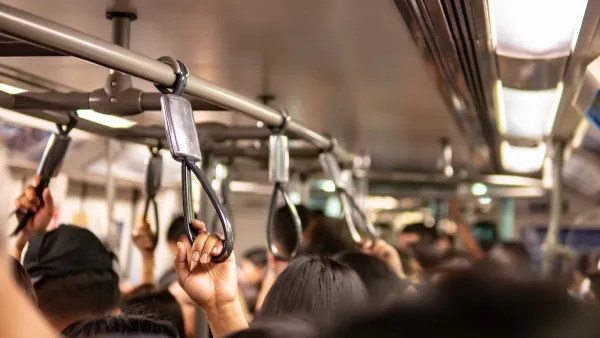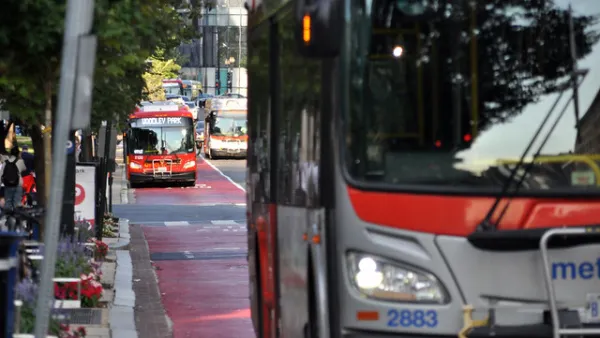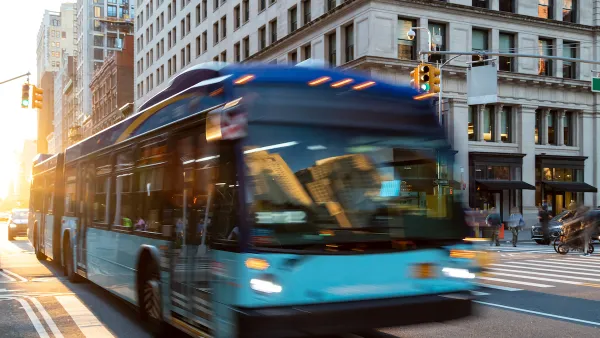Fare capping—putting a ceiling on the amount a transit passenger pays in a day or a month regardless of the number of trips—is becoming a popular policy option for transit agencies seeking to increase equity and bring back riders.

As transit agencies struggle to boost their ridership and adjust to the new realities of transportation in the wake of the COVID-19 pandemic, some advocates are promoting fare capping as one way to support low-income riders and make transit more affordable for frequent travelers.
As Skip Descant explains in Governing, “once a rider pays the equivalency of a monthly pass — whether that takes a week or two — the remaining rides that month are free. Or, once multiple transfers on a given trip reach a certain amount, the rest of the day’s trips are free.”
According to Descant, “Fare capping is seen as not only a key piece of transportation equity but also a way to grow loyalty among riders. And the payment technology — contactless payments, mobile ticketing and other advancements — is making fare capping an easier policy lift for transit organizations.” Christian Henry, senior vice president and general manager, North America eastern region at Cubic Transportation Systems, points out that “In transportation, the convenience of open payments on phones and wearables is helping New York, but the unbanked or those without devices still need the ability to use cash with dignity and have access to the benefits of fare capping through agency-issued fare media.”
The article describes a contactless fare pilot program called the California Integrated Travel Project (Cal-ITP), which “offers technical support to all California transit agencies interested in deploying a contactless fare payment system that includes fare capping.” To date, “As part of Cal-ITP, tap-to-pay systems — which are also fare-capping systems — have been deployed on the Monterey-Salinas Transit system, Santa Barbara Metropolitan Transit District and Sacramento Regional Transit District (SacRT) light rail.”
FULL STORY: One Way to Make Transit More Equitable: Fare Capping

Analysis: Cybertruck Fatality Rate Far Exceeds That of Ford Pinto
The Tesla Cybertruck was recalled seven times last year.

National Parks Layoffs Will Cause Communities to Lose Billions
Thousands of essential park workers were laid off this week, just before the busy spring break season.

Retro-silient?: America’s First “Eco-burb,” The Woodlands Turns 50
A master-planned community north of Houston offers lessons on green infrastructure and resilient design, but falls short of its founder’s lofty affordability and walkability goals.

Test News Post 1
This is a summary

Analysis: Cybertruck Fatality Rate Far Exceeds That of Ford Pinto
The Tesla Cybertruck was recalled seven times last year.

Test News Headline 46
Test for the image on the front page.
Urban Design for Planners 1: Software Tools
This six-course series explores essential urban design concepts using open source software and equips planners with the tools they need to participate fully in the urban design process.
Planning for Universal Design
Learn the tools for implementing Universal Design in planning regulations.
EMC Planning Group, Inc.
Planetizen
Planetizen
Mpact (formerly Rail~Volution)
Great Falls Development Authority, Inc.
HUDs Office of Policy Development and Research
NYU Wagner Graduate School of Public Service




























